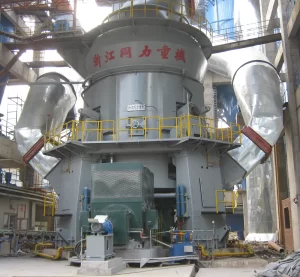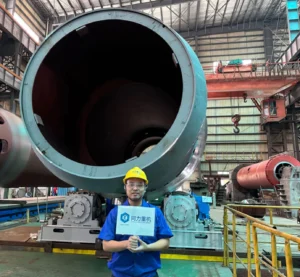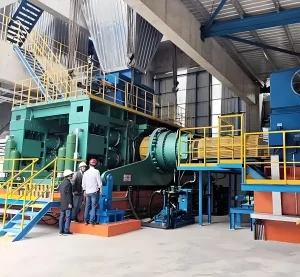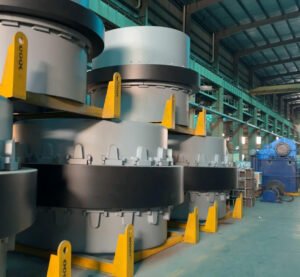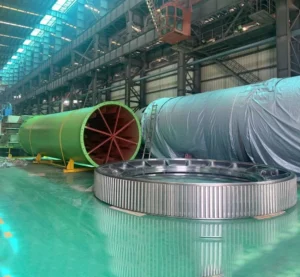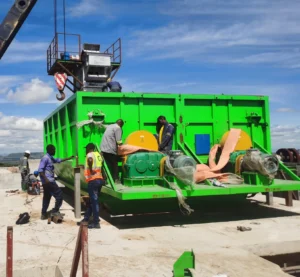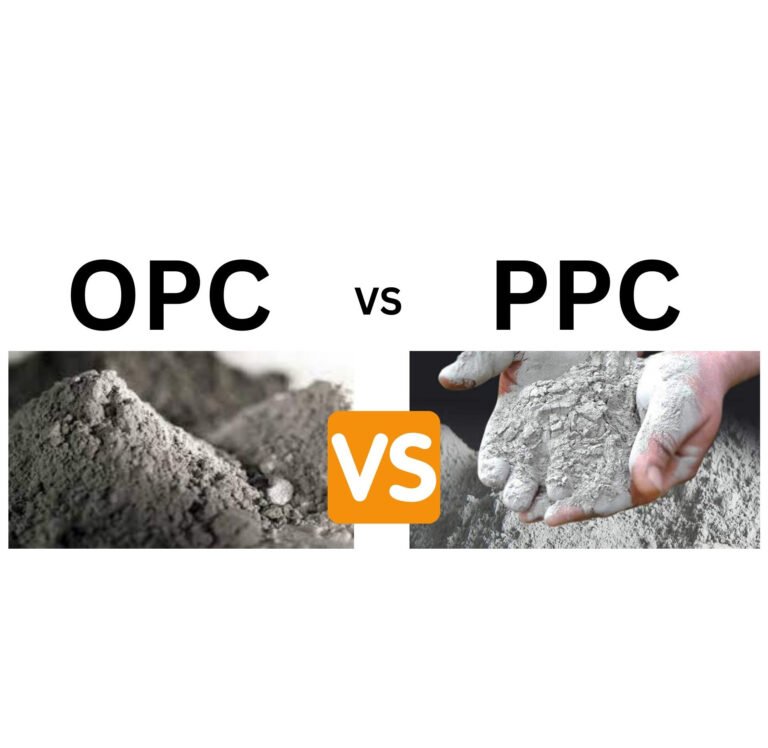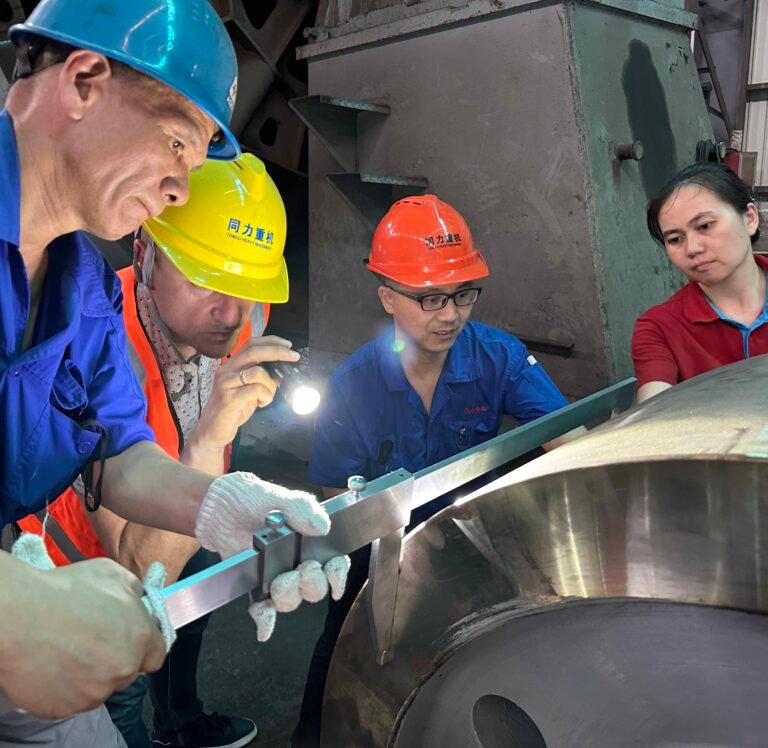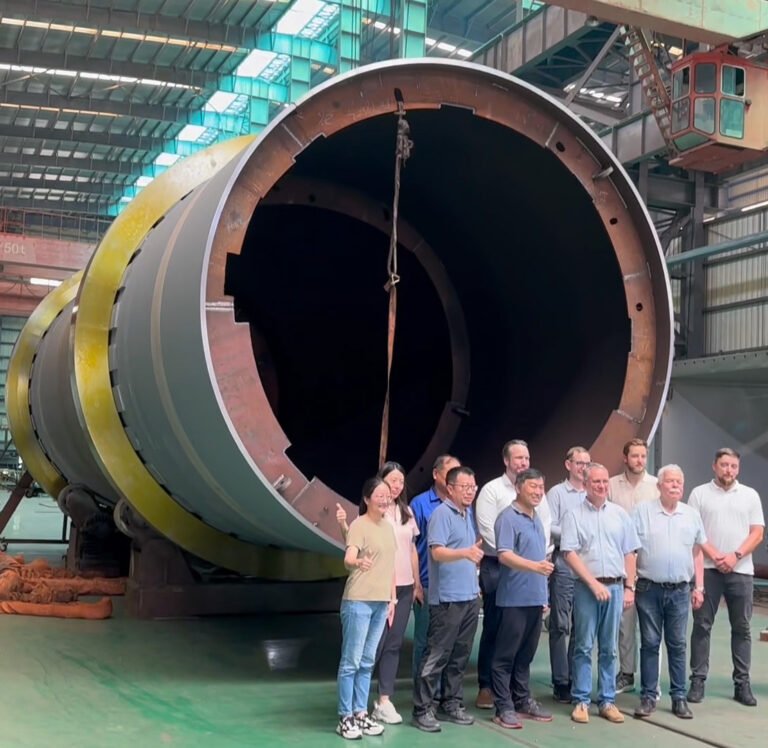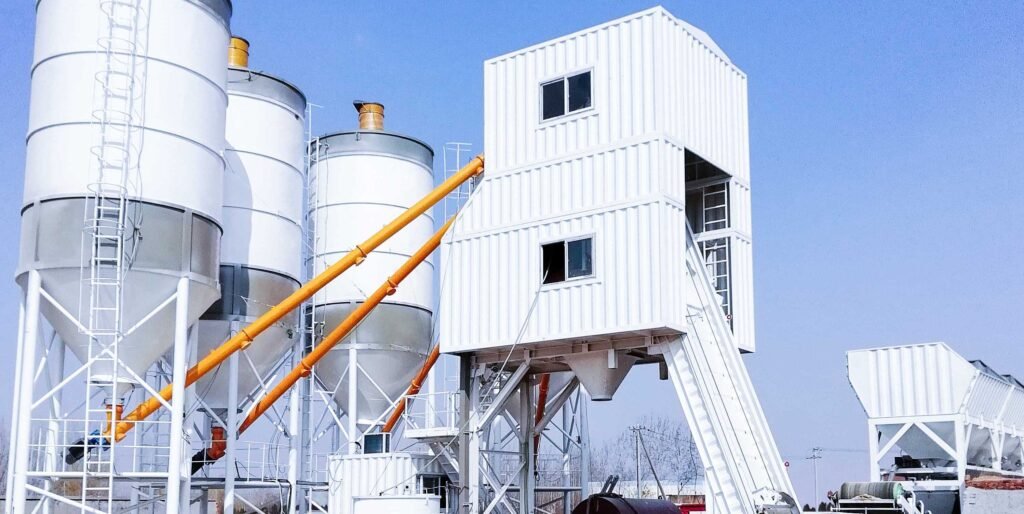
Concrete batching plants (also known as concrete precasting plants) are core equipment in the modern construction industry. Through mechanized and automated production methods, even though it cannot grinding cement like a vertical roller mill but they mix cement, aggregates, water, and admixtures in precise proportions to create uniform concrete. Concrete is the backbone of modern construction and plays a vital role in infrastructure development, residential construction, and commercial projects. Ensuring consistent concrete quality and timely delivery is crucial to the success of any construction project. This is where concrete batching plants come into play. A concrete batching plant, also known as a concrete mixing plant, is a facility that combines the various ingredients that make concrete. These ingredients include water, air, admixtures, sand, aggregates (such as rock and gravel) , fly ash, silica fume, slag, and cement. The plant ensures these ingredients are mixed in precise proportions to produce high-quality concrete suitable for a variety of construction needs. So how does a concrete batching plant work? It's crucial for operators to understand the concrete batching plant workflow. Without a solid understanding of concrete batching, operators cannot fully control and monitor the entire process, which helps improve concrete quality.
What is a concrete batching plant?
A concrete batching plant is a facility designed to produce concrete by mixing various raw materials in specific proportions. The main components of a concrete batching plant include:
- Aggregate Bin: A storage unit for sand, gravel, and other aggregates.
- Cement Silo: A container for storing cement and other powdered materials.
- Weighing System: A device that measures the exact amount of each ingredient.
- Mixer: A machine that mixes ingredients to form concrete.
- Conveyor Belt: A system that transports materials within a factory.
- Control System: A computerized unit that manages a batch process.
- Water supply system: A device that supplies and regulates water to the mixture.
These components work together to ensure concrete is produced to meet specific project requirements.
Components of a concrete mixing plant
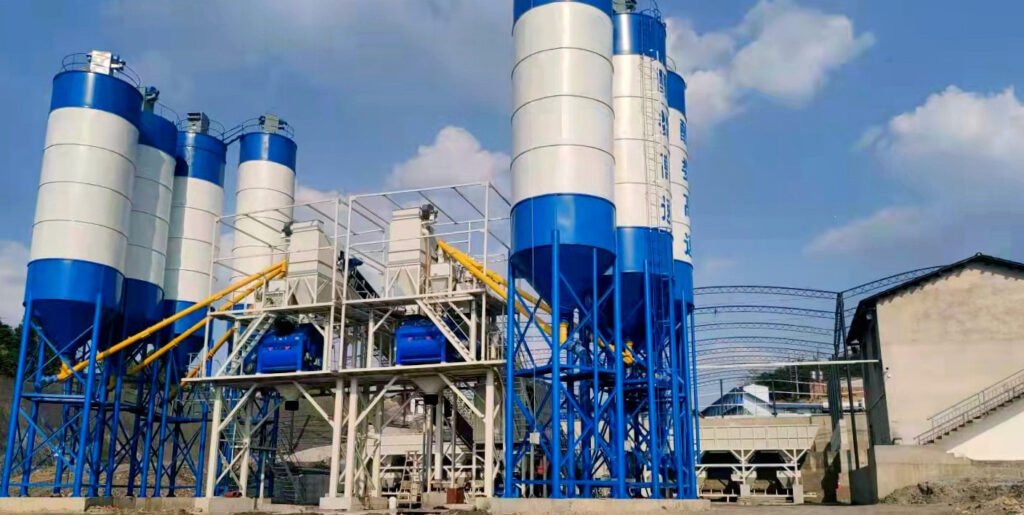
Aggregation Box
- These bins are used to store different types of aggregates such as sand, gravel and crushed stone before they are transferred to the mixing system.
- Each compartment typically stores one type or size of material, ensuring better control over the composition and quality of the mix.
- Modern systems are often equipped with sensors to monitor material levels and avoid shortages during production.
Cement silo
- Cement silos are tanks used to store cement, fly ash or other powdered additives, keeping them dry and protected from moisture contamination.
- They are usually equipped with a screw conveyor for material unloading and transport to a weighing hopper.
- Advanced silos include dust removal systems to prevent contamination and reduce material loss.
Weighing system
- This is a critical component that ensures that all materials (aggregates, cement, water, and additives) are accurately proportioned according to the desired concrete mix design.
- It includes separate scales for each material type.
- The accuracy of your weighing system directly impacts the consistency and quality of your final concrete product.
Blender
- The mixer is the heart of the batching plant, where all ingredients are mixed to produce high-quality concrete.
- Common mixer types include:
1.Twin-Shaft Mixer: Provides fast, thorough mixing; ideal for large volumes or high-slump concrete.
2.Pan mixer: Provides a uniform mix; commonly used in precast concrete production.
3.Drum mixer: usually used in mobile mixing plants or small projects.
Conveyor belt
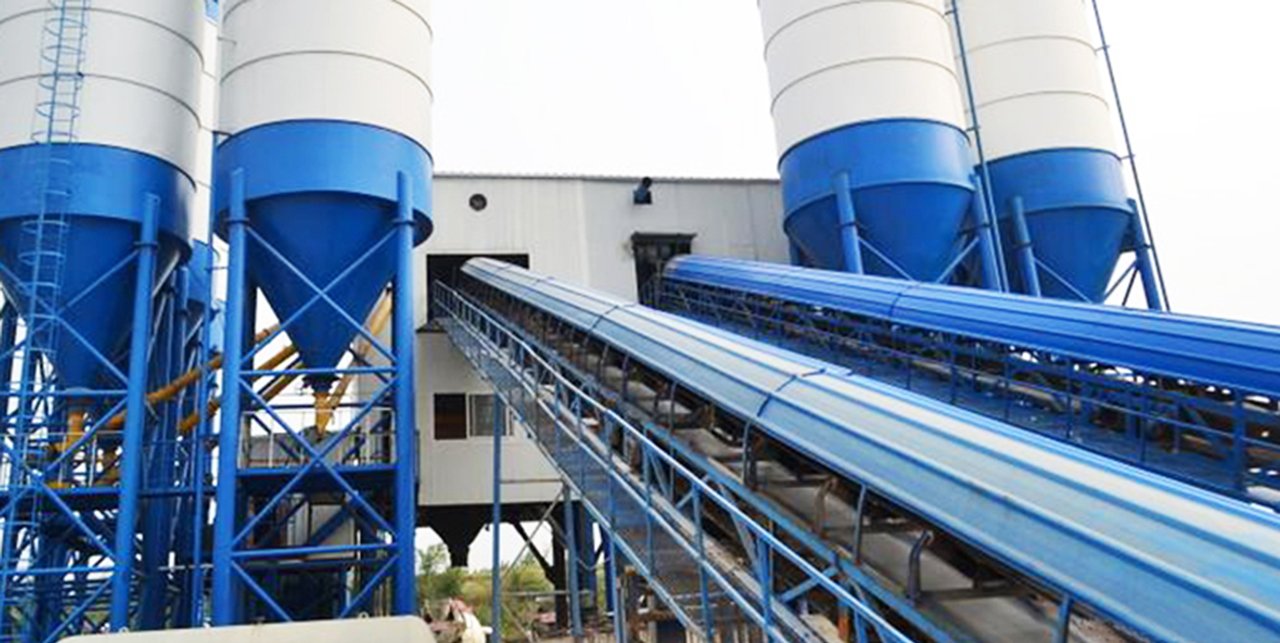
- Conveyor belts are used to transport aggregates and other materials from storage bins to the mixing unit.
- They ensure a steady, uninterrupted flow of material, thereby increasing the overall efficiency of your plant.
- Depending on the layout, the conveyor can be horizontal or inclined.
Control system
- Control systems automate the batching process, including measuring, mixing, data logging, and fault detection.
- Modern factories use PLC and HMI interfaces to achieve real-time monitoring and efficient operation.
- Operators can store multiple mix recipes and easily adjust settings based on project requirements.
Water supply system
- The system provides and regulates the precise amount of water required for each concrete batch – a key factor influencing workability, setting time and compressive strength.
- It typically includes a pump, flow meter, solenoid valve, and automatic adjustments based on aggregate moisture content.
Types of concrete batching plants
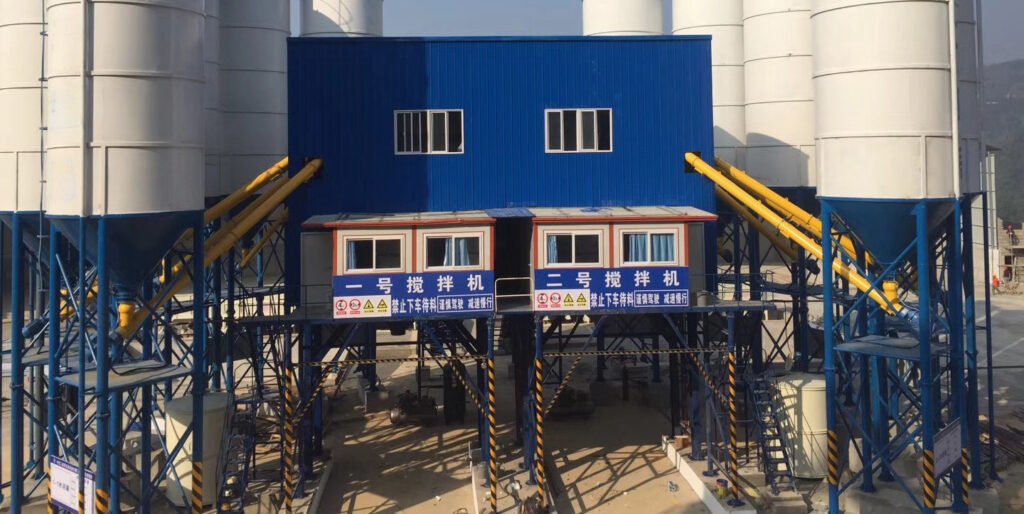
There are many classification criteria for concrete plants. Concrete batching plants can be categorized based on their mobility and mixing method. Each type meets different construction needs depending on project size, mobility requirements, and quality expectations.
1. Fixed concrete mixing station
- These are permanent installations, usually built for large and long-term infrastructure projects such as highways, airports or commercial complexes.
- Their high production capacity and precise control of mix quality make them ideal for producing large quantities of concrete with consistent properties.
- Stationary equipment is equipped with advanced automation systems that allow it to operate efficiently with minimal human intervention.
- Disadvantages: Requires a large space and a lot of installation time and cost.
Best suited for: High-volume, high-specification concrete production.
2. Mobile concrete mixing station
- Mobile equipment is a compact, transportable unit mounted on a trailer or skid.
- Designed for quick set-up and relocation, they are ideal for projects in remote or temporary locations, such as roadworks or rural construction.
- They offer moderate capacity but are equipped with all the basic systems for batching and mixing concrete.
- While not as precise or high-output as fixed devices, they are a cost-effective and flexible solution for short-term use.
Best for: Remote jobsites, fast-moving projects, or frequent relocation needs.
3. Dry mix concrete batching plant
- In a dry mix plant, all materials (aggregates and cement) are batched and loaded into trucks without water.
- Add water separately during transport or at the job site after transport to adjust to environmental conditions or specific project requirements.
- This approach offers greater flexibility in managing the water-cement ratio and is widely used in low to medium specification applications.
- However, if there is insufficient mixing within the truck, inconsistent quality may result.
Best for: Projects that prioritize flexibility and mobility over strict quality control.
4. Wet mix concrete batching plant
- In this setup, all ingredients, including water, are mixed at the factory before being discharged into transport trucks.
- This ensures a homogeneous, high-quality concrete mix with better workability and reduced variations.
- It is particularly important in applications requiring stringent quality standards, such as prefabricated structures or reinforced concrete.
- Transport needs to be carefully timed to avoid premature setting.
Best for: Projects requiring consistent, high-strength concrete with minimal on-site adjustments.
5. Central concrete mixing plant
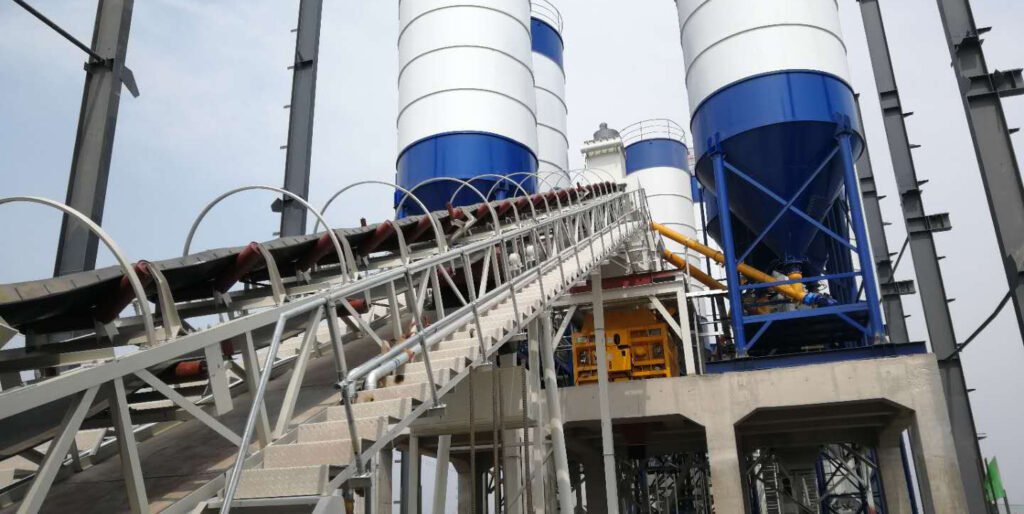
- Central mixing systems, also known as “wet mixing plants,” involve mixing all ingredients (aggregates, cement, water, and admixtures) in a central mixer at the plant.
- The fully mixed concrete is then delivered to site in a ready-to-use state, ensuring maximum control over mix quality and uniformity.
- Better control over slump, air content and mixing time makes it suitable for urban or industrial projects where high performance is required.
- However, initial investment and maintenance costs are generally high.
Best suited for: Large urban infrastructure, precast plants, or highly regulated building environments.
How does a concrete batching plant work? From raw materials to finished concrete
The production process of a concrete batching plant can be divided into 5 steps to operate, aiming to consistently and efficiently produce high-quality concrete.
Aggregate metering and conveying
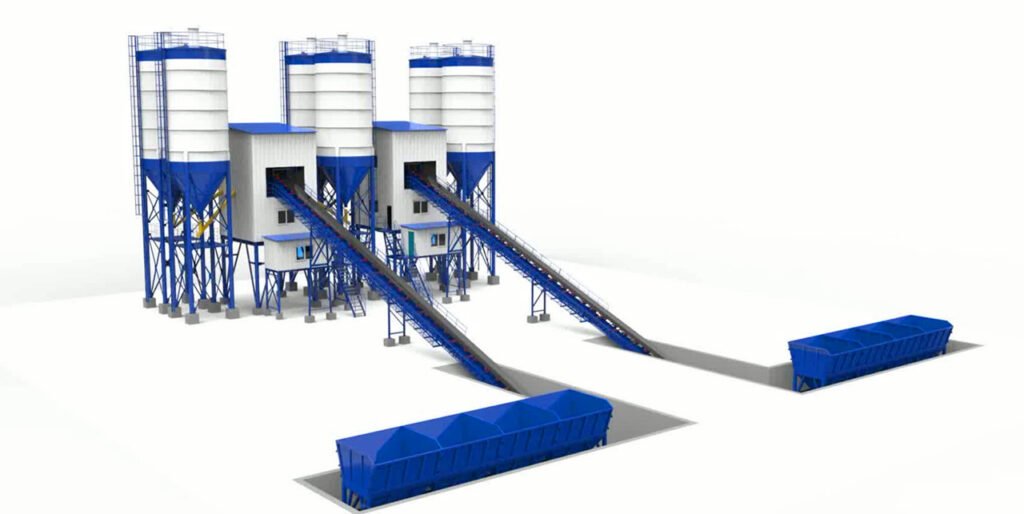
Aggregate metering and delivery is the first step in a concrete batching plant, which ensures the accuracy and stability of concrete batching. This step usually includes the following stages.
- Aggregate storage and weighing hoppers : Concrete batching plants typically have aggregate storage hoppers for storing aggregates. Each hopper contains a weighing hopper for accurately measuring the total weight. Sensors and equipment monitor the hoppers to maintain measurement accuracy.
- Flat belt conveyor : The measured aggregate is discharged from the metering hopper onto the flat belt. The flat belt is a common conveying equipment that transports the aggregate from the metering hopper to the inclined belt conveyor by driving the belt.
- Inclined belt conveyor : Aggregates are conveyed to the inclined belt conveyor via a flat belt. Inclined belt conveyors are inclined conveyors that transport aggregates from below to the aggregate storage hopper above. The operation of the inclined belt conveyor ensures smooth transportation of aggregates between different heights.
- Aggregate hopper : The aggregate hopper on the roof of the concrete plant stores measured aggregates. Once the aggregates are in the hopper, they can be further processed, such as fed into a mixer for mixing.
Through the above steps, the concrete mixing station can achieve accurate measurement and smooth transportation of aggregates, laying a reliable foundation for subsequent mixing work.
Powder metering and conveying
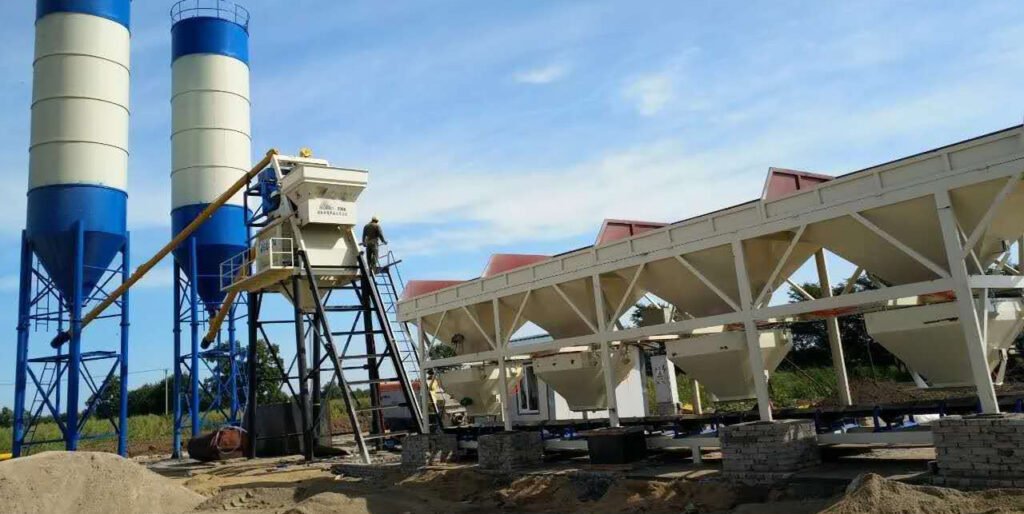
Powder metering and delivery are important components of a concrete batching plant to ensure the accuracy and stability of concrete mixing. The following are the main steps of this process.
- Powder storage and metering hoppers: Mixing plants typically have silos for cement, fly ash, and other powders to provide adequate storage. Each powder storage silo has a metering hopper for accurate powder weight measurement. Sensors and equipment monitor the hoppers for precise measurement.
- Screw conveyor conveying: Powders (such as cement, fly ash, etc.) are transported by screw conveyors. Screw conveyors are a common conveying equipment that transports powders from storage silos to corresponding metering hoppers through rotating spiral blades.
- Powder metering: Once the powder enters the corresponding metering hopper, it will be accurately metered. The hopper has sensors and equipment to monitor the powder flow to achieve accurate metering.
- Water and admixture metering: In addition to powder, water and admixtures also need to be metered. Water and admixtures are pumped into their respective metering hoppers for metering to ensure the accuracy of the ingredients.
- Conveying to the mixer: Powder, water and admixtures are metered and fed into the mixer in a set order for mixing. Usually, the materials are evenly mixed into concrete paste in the mixer.
Through the above steps, the batching plant can achieve accurate measurement and smooth transportation of raw materials such as powder, water, and admixtures, providing reliable guarantee of raw materials for subsequent mixing and stirring work.
Batching process
- Preparation : Before starting the batching process, it is necessary to ensure that the mixer is in normal working condition and the hoppers of various raw materials are ready and accurately measured according to the preset proportions.
- Sequential feeding : Aggregates, cement, fly ash, water and additives are fed into the mixer in the order set in the pre-set ratio and order. Usually, the feeding sequence is in the order of aggregates, cement, fly ash, water and additives to ensure uniformity and stability of the mixture.
- Control the feed rate : During the feeding process, the feed rate of raw materials is controlled according to the mixer status and production requirements. Changes in feed rate will affect mixing and production, so appropriate adjustments and controls are required.
- Feeding process monitoring : Continuously monitor the multi-channel raw material feeding process to ensure the accuracy and stability of the feeding process. Monitoring equipment and control systems can quickly resolve feeding problems and ensure stable production.
- End of feeding : When all raw materials have been fed, the feeding process ends. At this point, the concrete mixer mixes the raw materials into concrete slurry and is ready for the next working cycle.
Mixing process
Mixing is one of the most important steps in a concrete batching plant , as it thoroughly blends the various raw materials to form a uniform concrete slurry. The following are the main steps of the mixing process.
- Starting the blender : Before blending, the operator should start the blender to verify its functionality. A blender is a machine with a stirrer or mixing blades that is used to mix raw materials.
- Raw material input : Different raw materials are measured, conveyed, and placed into the mixer in the specified proportions. The feeding process requires precise control of the sequence and speed to maintain mixing uniformity and stability.
- Mixing Process : After all raw materials are added to the mixer, the mixer begins mixing. The agitator or mixing blades rotate, mixing the raw materials and forming a uniform concrete paste. The mixing process usually takes a certain amount of time to ensure a uniform mix.
- Mixing quality monitoring : During the mixing process, operators use monitoring equipment and control systems to monitor quality in real time. They monitor concrete indicators and adjust mixer settings in a timely manner to ensure stable mixing quality.
- End of Mixing : When the mixing reaches the time or uniformity target, the operator stops the mixer to end the mixing process. At this point, the formed concrete slurry can be discharged for subsequent construction or other uses.
By thoroughly mixing the raw materials, this process produces a stable concrete paste, which provides a reliable basis for the production of concrete products.
Unloading process
- Stop stirring: Before unloading, the mixer must be stopped. Usually, the mixer is equipped with a control system to stop the rotation to ensure safe unloading.
- Open the discharge port: After the mixer stops, the operator usually opens the discharge port located at the bottom or side. After the discharge port is opened, the mixed concrete can flow smoothly out of the mixer.
- Control the unloading speed: During the unloading process, the unloading speed of concrete should be controlled in time. Unloading too fast will cause overflow or equipment damage, while unloading too slowly will affect production efficiency.
- Monitor the Discharge Process: During the concrete discharge process, constant monitoring is crucial to ensure smooth operation. The operator should observe and monitor the concrete flow near the discharge port to address any issues.
- Collecting Concrete: During the unloading process, concrete flows into pre-prepared containers or concrete mixer trucks. Operators must efficiently collect and store the concrete for subsequent transportation or use.
- Clean the discharge port: After the concrete is discharged, the discharge port and the surrounding area should be cleaned in time to ensure smooth subsequent discharge. This also helps to keep the equipment clean and in normal operation.
Following these steps will ensure that the mixed concrete is discharged smoothly from the mixer, thus providing a reliable raw material base for subsequent transportation or use.
Stationary vs. Mobile Mixing Plants : What’s the Difference?
Well, that’s the difference between a stationary concrete plant and a mobile concrete plant – they both get the job done, but in different ways.
Stationary concrete batching plants are like heavy-duty cranes. They're fixed in one location and can handle up to one ton of concrete at a time. If you're working on a large, long-term project, this type of plant is often your first choice. They're reliable and efficient when you need large quantities of concrete on a regular basis.
Mobile concrete mixing plants, on the other hand, offer greater flexibility. They can be moved quickly, and installation is quick. If your site changes frequently or you're moving between projects, a mobile concrete mixing plant can be a real help. They're also ideal if you don't want the hassle of a large, permanent installation.
Automation and safety of concrete batching plants
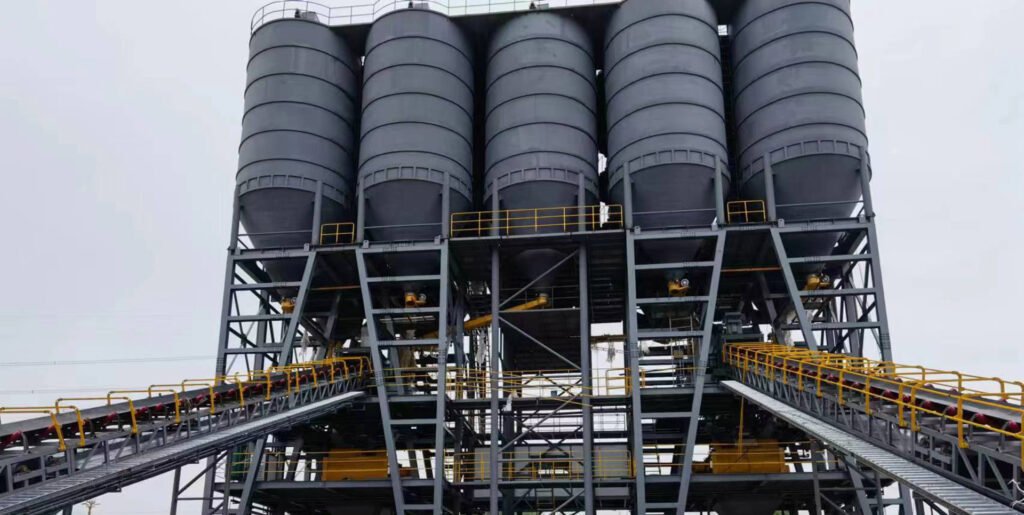
Most factories today are automated. This means that mixing is done by computers and sensors, without human intervention. Honestly, this is safer and more precise. You don't have to worry about human error messing up the mixing process.
Automation helps address several key issues:
- Keep track of ingredient levels so you don’t run out or have too much.
- Precisely control mixing time to achieve optimal concrete condition.
- What if something goes wrong? The system can immediately stop plant operations to avoid larger problems.
Additionally, safety measures such as dust collectors and emergency stop buttons help protect workers and the environment.
Impact of concrete mixing plants on the environment
Blending plants can cause some environmental problems, but many are working to address this:
- If not controlled, cement dust and small particles can pollute the air.
- The water used in mixing may run off and affect nearby soil or water.
- Mixing concrete requires energy and therefore creates a carbon footprint.
Good plants use dust collectors, recycle water, and run energy-efficient machines to reduce these problems.
How to maintain concrete mixing plant
Keeping your plants healthy is easier than you think. Just follow these tips:
- Clean mixers and conveyor belts after each batch to avoid buildup.
- Inspect moving parts regularly to catch wear and tear before it causes problems.
- Calibrate your weighing system frequently to keep measurements accurate.
- Lubricate equipment to prevent unnecessary wear.
- Train your team on safety and the proper use of the plant.
Doing so will keep your plant running smoothly and help you avoid costly repairs.
Key factors affecting concrete quality

The quality of concrete is the result of the interaction of many factors. Negligence of any one factor may lead to substandard final product. The following are the key factors affecting the quality of concrete:
Raw material quality
Raw materials are the foundation of concrete, and their quality directly determines its potential performance. Cement's strength grade, stability, and heat of hydration directly impact concrete's strength and durability. Aggregate gradation, strength, mud content, and particle shape influence concrete's compatibility, strength, and durability. The type, dosage, and reactivity of admixtures (such as fly ash and slag powder) influence concrete's performance. The type, dosage, and compatibility of admixtures with cement influence concrete's workability and hardening properties. Mixing water quality must also meet standards to prevent impurities from adversely affecting concrete's performance. Therefore, strict control of raw material quality is paramount in ensuring concrete quality.
Mix design
The mix ratio is a key parameter that determines the proportions of various raw materials in concrete. The water-cement ratio is a key factor influencing concrete strength. A lower water-cement ratio results in higher concrete strength, but a too low ratio can affect workability. The amount of cementitious materials (cement and admixtures) affects concrete's strength and durability. The amount of aggregate affects concrete's workability and economic efficiency. The amount of admixtures needs to be adjusted based on specific circumstances to achieve optimal results. A scientific and rational mix ratio design is crucial for ensuring that concrete properties meet design requirements.
Mixing uniformity
Mixing is the process of uniformly blending various raw materials. This uniformity directly affects the uniformity of concrete properties. The performance of the mixer (type, impeller design, etc.) and mixing time are the primary factors influencing mixing uniformity. Insufficient mixing time results in uneven concrete mixing, with significant variations in properties among various components. Excessive mixing time can cause concrete segregation, also affecting uniformity. Therefore, selecting the right mixer and properly controlling mixing time are crucial.
Measuring accuracy
The metering accuracy of various raw materials directly affects the actual mix ratio of concrete, and thus its ultimate properties. Modern batching plants typically use high-precision electronic weighing systems to minimize metering errors. Regular calibration and maintenance of metering equipment are important measures to ensure metering accuracy.
Construction technology
The concrete construction process includes transportation, pouring, vibration, and curing, and quality control is crucial to the concrete's ultimate performance. Concrete should be transported to avoid segregation and slump loss; pouring should be carried out in layers to avoid cold joints; vibration should be sufficient but not excessive; and curing is key to ensuring the proper development of concrete strength. The appropriate curing method and duration should be selected based on environmental conditions and concrete type.
Control system stability
The control system is the "brain" of a concrete batching plant. Its stability directly affects the stability and reliability of the entire production process. A stable control system ensures automation and standardization of the concrete production process, reduces human error, and improves production efficiency and product quality consistency.
Environmental factors
Environmental factors such as temperature and humidity can also affect concrete's performance. For example, low temperatures slow cement hydration, affecting early strength development; high temperatures can cause premature dehydration and cracking in concrete. Therefore, appropriate measures should be taken during construction based on environmental conditions, such as insulation measures during winter and moisture retention measures during summer.
FAQ
Key measures include:
Arch breaking device: A pneumatic arch breaker is installed at the bottom of the tank to regularly spray air to break up the lumps;
Screw conveyor inclination angle: designed to be ≤45° to reduce resistance;
Dry air: The tank top dust collector maintains a low-pressure dry environment inside;
Regular maintenance: clean up residual powder when the machine is shut down.
Purpose: To avoid sand and gravel segregation and improve homogeneity.
Implementation:
When the aggregate is conveyed by the belt conveyor, materials of different particle sizes are mixed through the transfer funnel;
Some mixing stations have added pre-mixing bins to mix aggregates briefly before entering the main batch;
Optimize the order of aggregate feeding (large stones first, then sand).
Modern concrete mixing plants are equipped with a closed material yard and pulse dust collector as standard:
The aggregate silo is fully enclosed to reduce dust;
A filter dust collector is installed on the top of the powder tank (filtration efficiency ≥ 99.5%);
The main machine feeding port is equipped with a negative pressure dust suction device, which complies with PM2.5 emission standards.
Through the sand and gravel separator + slurry water recovery system:
The wastewater from the truck mixer is fed into the separator to separate the sand and gravel for reuse;
After the muddy water settles, add pH regulator and reuse it as concrete mixing water (can replace 30% of clean water);
Achieve "zero emissions" and reduce raw material costs.
Investing in a concrete batching plant can result in significant cost savings, increased efficiency, and improved project quality. For large-volume or long-term projects, the return on investment can be substantial, especially when the location and project requirements make on-site concrete production advantageous.
Conclusion
Concrete batching plants, through their highly integrated and automated precision systems, enable precise metering, efficient mixing, and stable delivery of cement, aggregates, water, and admixtures, revolutionizing traditional concrete production. Their core value lies in providing reliable, timely delivery of high-quality concrete for a wide range of projects . Stationary batching plants, with their large production capacity, high-precision control, and advanced environmental protection measures, are the preferred choice for large-scale infrastructure and long-term projects , improving project quality and efficiency. Mobile batching plants, with their flexibility, rapid deployment, and adaptability to remote and temporary construction sites, overcome geographical limitations and transportation costs. Whether using dry, wet, or centralized mixing methods, the essence of operation lies in strict control of raw material quality, precise mix design, mixing uniformity, metering accuracy, and the stability of the control system throughout the entire process. These factors collectively determine the performance of the final concrete product. Modern batching plants also increasingly prioritize environmental protection and sustainable development, reducing the environmental impact of production through dust control, wastewater recycling, and energy-saving designs. Therefore, concrete mixing plants are not only key facilities that meet the demand for high-performance concrete in modern buildings, but also important engines that drive the development of engineering construction towards efficiency, greenness, and intelligence. Their technological evolution and optimization will continue to provide solid, reliable, and sustainable basic material support for the global construction industry.

